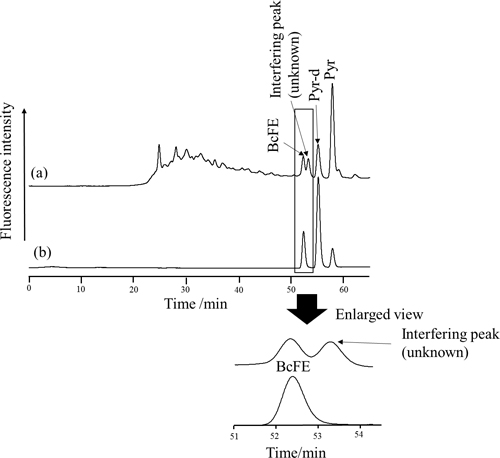Abstract
Benzo[c]fluorene (BcFE) concentrations in benzene/ethanol extracts of airborne particulates were determined by high-performance liquid chromatography (HPLC) with fluorescence detection. HPLC conditions were as follows: columns, two ZORBAX Eclipse PAH (4.6 i.d. × 250 mm, 3.5 μm) and one Inertsil ODS-P (4.6 i.d. × 250 mm, 5 μm) in series; mobile phase, acetonitrile–water (98:2, v/v), 0.3 mL/min; detection wavelengths, excitation 309 nm, emission 354 nm. Particulate-phase BcFE concentrations in the atmosphere varied seasonally (winter > summer). The concentrations were 11000 ± 6100 pg m−3 (winter) and 40 ± 12 pg m−3 (summer) in Beijing, China, and 13 ± 5.0 pg m−3 (winter) and 2.7 ± 0.52 pg m−3 (summer), in Kanazawa, Japan. In both cities, the particulate-phase BcFE concentration in the atmosphere was lower than that of benzo[a]pyrene (BaP) by a factor of 0.03 – 0.43. However, the mutagenic contribution of particulate-phase BcFE in the atmosphere in winter calculated from the mutagenicity relative potency factor was greater than that of BaP.
